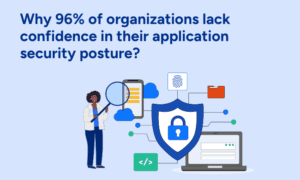In an era defined by data and accelerated by technological advancement, Artificial Intelligence (AI) is not merely a tool, but a transformative force reshaping industries. At the forefront of understanding and implementing this paradigm shift is Martin Huberman, an accomplished Program Manager specializing in Revenue Strategy & Operations. With a background spanning strategic consulting and a passion for driving impactful business outcomes, Huberman offers a unique vantage point on how AI is fundamentally changing the game for data analytics and, by extension, corporate revenue strategies.
Huberman’s comprehensive perspective underscores a pivotal moment in the evolution of business. By leveraging AI to refine data analytics, organizations can move beyond reactive decision-making to proactive, predictive strategies, ensuring sustained growth and competitive advantage in an increasingly data-driven world. His insights serve as a compelling roadmap for any enterprise looking to harness the full potential of AI in its revenue strategy and operations.
The AI Revolution in Data Analytics: Beyond Automation
For Huberman, the impact of AI on data analytics is nothing short of revolutionary. “AI is changing everything,” he said. “It’s revolutionizing data analytics by automating tedious tasks like data cleaning and integration, drastically increasing speed and efficiency for real-time insights.”
This automation, he explains, isn’t just about cutting down manual labor; it’s about empowering a deeper understanding. “AI empowers deeper understanding through predictive analytics and anomaly detection, uncovering hidden patterns in vast datasets that would be impossible for humans to find manually.”
Moreover, AI is democratizing access to complex analytical capabilities. “It also makes analytics more accessible to everyone, even handling complex unstructured data,” Huberman notes. This accessibility means that insights previously reserved for highly specialized data scientists can now be leveraged by a broader range of business professionals.
While AI’s capabilities are vast, Huberman is quick to clarify its role: “While it doesn’t replace human analysts, AI augments their capabilities, allowing them to focus on strategic thinking and interpretation rather than manual processing. This leads to more informed and proactive decision-making across all business functions.”
Strategic Implementation in Tech Sales: Navigating a Dynamic Landscape
As a Program Manager focused on revenue strategy, Huberman’s insights extend directly to the challenging and dynamic world of tech sales. When asked how and why he would implement strategy changes in this sector, his response highlights the relentless pace of innovation and market evolution.
“I’d implement changes in tech sales because the market is ever-changing, demanding responses to competitive pressure and technology shifts,” he explains. “Customers are also evolving; companies need to adapt to their objectives and service them more efficiently.”
His approach is fundamentally data-driven. “My approach would involve leveraging data to pinpoint inefficiencies and opportunities,” Huberman states. Crucially, AI is positioned at the core of this transformation. “AI will be central, transforming how any tech company develops both internal sales processes and external customer-facing strategies to drive revenue growth and stay ahead.” This holistic view emphasizes AI’s role not just in analysis, but in operationalizing strategies for tangible revenue impact.
Approaching AI Strategy in Tech: A Blueprint for Growth
Deciding how to approach AI strategy at a tech company requires a methodical and results-oriented approach. Huberman outlines a clear framework. “To approach AI strategy design, I’d start by identifying core business objectives AI can enable,” he says. This foundational step ensures that AI investments are directly tied to measurable strategic goals. “This includes leveraging AI for advanced data analytics to uncover deeper insights and predict trends.”
Beyond insights, the strategy focuses on efficiency. “Next, I’d pinpoint cumbersome processes ripe for automation, embedding AI to streamline operations and reduce manual effort,” Huberman continues. But the ultimate goal remains revenue optimization. “Crucially, the strategy would prioritize how AI can drive leaner, more efficient sales operations to boost customer coverage and conversion. This holistic approach ensures AI investments directly support strategic growth, focusing on measurable impact across the tech company.”
How Ads Drive More Profit: Refining Success with Sales Analytics Tools
While conventional wisdom highlights the direct impact of advertising on sales, Huberman emphasizes how sophisticated data analytics, powered by AI, refines this process to redefine profitability. He outlines three pivotal avenues through which ads, when synergistically aligned with advanced sales analytics tools, profoundly enhance a company’s bottom line and market position:
- Increase Demand and Sales Volume: “Ads directly inform potential customers, generate interest, and motivate purchases, leading to higher sales and enabling companies to capture greater market share,” Huberman explains. This direct correlation is amplified when AI optimizes ad delivery and targeting.
- Build Brand Value and Loyalty: “Consistent advertising enhances brand awareness, recognition, and trust, fostering customer loyalty, encouraging repeat business, and allowing for premium pricing,” he adds. AI plays a crucial role here by ensuring brand messaging reaches the most receptive audiences at optimal times.
- Support Growth and Expansion: “Ads are vital for successful new product launches, creating initial buzz and adoption, and helping companies effectively reach new markets and customer segments,” Huberman concludes. AI-driven analytics accelerates this process by pinpointing ideal launch conditions and target demographics.
Increasing Data Accuracy: AI as an Automated Data Hygienist
A persistent challenge in data analytics has always been data accuracy. Huberman views AI as a game-changer in this regard. “Think of AI as an automated way to approach data hygiene at scale,” he posits. “It’s not just about speed; it’s about a level of precision previously unattainable.” He elaborates on how AI significantly boosts data accuracy:
- Automated Cleansing & Validation: “AI algorithms automatically identify and correct errors, inconsistencies, missing values, and duplicates, standardizing data far more efficiently and accurately than manual processes,” he notes.
- Anomaly Detection: “AI excels at recognizing unusual patterns or outliers, flagging inaccurate or fraudulent data entries in real-time,” a critical capability for maintaining data integrity, said Huberman.
- Continuous Learning: “AI systems learn from new data and human feedback, constantly improving their ability to identify and rectify data quality issues,” ensuring that data accuracy is not a static achievement but a continually improving state.
Predicting Customer Behavior in E-commerce: The Power of Personalization
In the competitive landscape of e-commerce, accurately predicting customer behavior is paramount. Huberman highlights how AI-powered ad solutions are revolutionizing this space.
“AI-powered ad solutions help businesses significantly by finding new customers, uncovering additional performance opportunities, and accelerating growth,” he states. “They achieve this by combining a business’s understanding of its offerings with broad consumer insights to pinpoint high-value audiences and keep up with trends.”
These solutions drive profitable growth through:
- Real-time Optimization: “Continuously optimizing campaign performance in real-time.” This dynamic adjustment ensures maximum return on ad spend.
- Personalization at Scale: “Leveraging predicted conversion rates to deliver highly relevant and personalized ads to individuals with unique preferences.” This moves beyond broad demographics to individual consumer desires.
- Automation: “Handling routine tasks through automation, allowing marketers to concentrate on strategy and creativity.” This frees human talent for higher-level strategic thinking, leading to improved efficiency and effectiveness in advertising campaigns.
Uncovering Patterns Beyond Human Perception
One of the most fascinating aspects of AI’s capabilities, according to Huberman, is its ability to discern patterns that are invisible to the human eye. “AI is exceptional at predicting intricate patterns that often elude human observation,” he explains. “It leverages its capacity to process immense datasets and identify subtle, non-obvious correlations.”
This includes a range of sophisticated analysis, from forecasting highly specific behaviors within micro-segments of customers, to detecting anomalies in time-series data that might signal fraud or system issues. There also must be an understanding of how multiple variables interact to influence an outcome. These capabilities allow businesses to anticipate needs, mitigate risks, and seize opportunities with unprecedented precision.
The Next Wave: Future Trends in Data Analytics
Looking ahead, Huberman paints a clear picture of the future landscape for data analytics, dominated by AI and Machine Learning. “The future of data analytics will be dominated by AI and Machine Learning,” he predicts. “They’ll handle more tasks, from getting data ready to making smart predictions.”
He foresees a shift towards greater autonomy and accessibility. “We’ll also see AI that can make decisions on its own. Smarter tools will let anyone understand data, even without being a tech expert. This is happening through simple language commands.” The demand for immediate insights will also drive innovation. “Expect more real-time analysis, especially with smart devices, so we can get answers instantly.”
Generative AI, a burgeoning field, is also set to play a significant role. “New AI that creates things will make reports and plans much easier,” Huberman suggests, streamlining creative and analytical output. Finally, paramount importance will be placed on ethical considerations. “There will be a bigger focus on keeping data safe and using AI fairly, with clear rules so we can trust what AI tells us.”




































